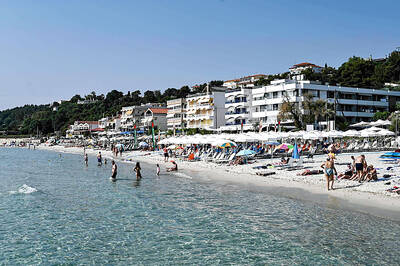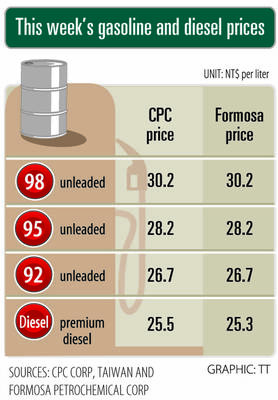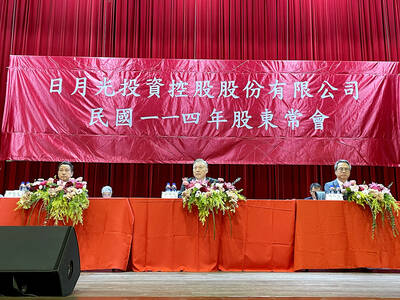Personal digital assistant (PDA) vendors are flexing their muscles and developing new applications and distribution channels to boost sales of the handheld devices in Taiwan, PDA companies said yesterday.
"The global PDA market appears to have slowed down as new gadgets with integrated functions like smart phones are increasingly eating into the PDA segment. The key is lack of killer applications," said Marty Kung (
MIC predicted that global shipments of PDAs will slide to around 11.4 million units this year from 12.2 million last year. The growth in this industry will be very minimal, as the industry is moving into a mature phase, Kung said.
In a report released in October, the international research house IDC said the worldwide market for handheld devices grew in the third quarter of this year.
Device shipments rose by 1.1 percent year-on-year in the third quarter and increased by 9.4 percent from the previous quarter to 2.37 million units, IDC said.
But IDC predicted the growth will be unsustainable.
"Unless holiday season demand proves particularly positive, the handheld device market will decline more steeply in 2003 than in 2002 as it returns to 2000's level," IDC said.
To combat the downward pressure, Mitac International Corp (
"In an attempt to get rid of the shadow, last month we rolled out our first PDA, Mio168, with embedded global positioning system [GPS] service," said Mitac spokeswoman Justine Liu (
To boost sales and brand names, Mitac began early this month to distribute its latest PDA at Family-Mart Co's (
"So far, sales of the new model have far exceeded our expectations," Liu said. Mitac originally set a target of selling 2,000 Mio168s but has sold nearly 5,000 units as of yesterday. The company sold about 300 such devices at Family Mart, she added.
Handheld computer maker PalmOne Inc yesterday also launched its new PDA model T3 equipped with a GPS option. The company said it expects the local handheld computing market to remain flat this year and could have a chance to see slight growth next year amid an economic recovery.
But PalmOne is still gauging the feasibility of selling its PDA products at convenience stores, said Jim Tsai (
"Higher cost and inventories will be our top concerns when thinking about selling our products at convenience chain stores," he said.
Consumer's purchasing habits are also a concern, Tsai added.
"Without detailed introductions of IT products like at computer and electronics retail stores, consumers lack of a strong motivation to buy a high-price product like a PDA, not to mention paying in cash."
Mitac's Mio168 and PalmOne's T3 are retailed at about NT$12,000 and NT$14,300 respectively.
Hewlett-Packard Co, the world's largest PDA vendor, said Taiwan's retail channel is not the major venue for the company to sell its handhelds.
"It is not a long-term and stable way to sell information technology products at convenience stores, which usually sell those products along with others in a special promotion," said Frank Hsu (徐寶旺), a marketing development manager at Hewlett-Packard Taiwan Ltd.

Greek tourism student Katerina quit within a month of starting work at a five-star hotel in Halkidiki, one of the country’s top destinations, because she said conditions were so dire. Beyond the bad pay, the 22-year-old said that her working and living conditions were “miserable and unacceptable.” Millions holiday in Greece every year, but its vital tourism industry is finding it harder and harder to recruit Greeks to look after them. “I was asked to work in any department of the hotel where there was a need, from service to cleaning,” said Katerina, a tourism and marketing student, who would

i Gasoline and diesel prices at fuel stations are this week to rise NT$0.1 per liter, as tensions in the Middle East pushed crude oil prices higher last week, CPC Corp, Taiwan (台灣中油) and Formosa Petrochemical Corp (台塑石化) said yesterday. International crude oil prices last week rose for the third consecutive week due to an escalating conflict between Israel and Iran, as the market is concerned that the situation in the Middle East might affect crude oil supply, CPC and Formosa said in separate statements. Front-month Brent crude oil futures — the international oil benchmark — rose 3.75 percent to settle at US$77.01

Merida Industry Co (美利達) has seen signs of recovery in the US and European markets this year, as customers are gradually depleting their inventories, the bicycle maker told shareholders yesterday. Given robust growth in new orders at its Taiwanese factory, coupled with its subsidiaries’ improving performance, Merida said it remains confident about the bicycle market’s prospects and expects steady growth in its core business this year. CAUTION ON CHINA However, the company must handle the Chinese market with great caution, as sales of road bikes there have declined significantly, affecting its revenue and profitability, Merida said in a statement, adding that it would

UNCERTAINTIES: The world’s biggest chip packager and tester is closely monitoring the US’ tariff policy before making any capacity adjustments, a company official said ASE Technology Holding Inc (日月光投控), the world’s biggest chip packager and tester, yesterday said it is cautiously evaluating new advanced packaging capacity expansion in the US in response to customers’ requests amid uncertainties about the US’ tariff policy. Compared with its semiconductor peers, ASE has been relatively prudent about building new capacity in the US. However, the company is adjusting its global manufacturing footprint expansion after US President Donald Trump announced “reciprocal” tariffs in April, and new import duties targeting semiconductors and other items that are vital to national security. ASE subsidiary Siliconware Precision Industries Co (SPIL, 矽品精密) is participating in Nvidia